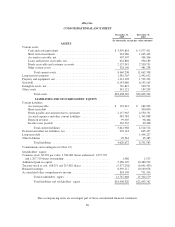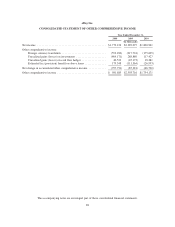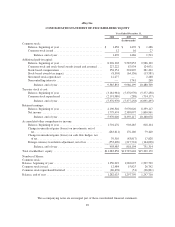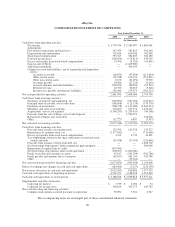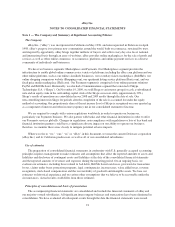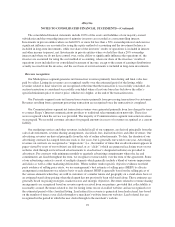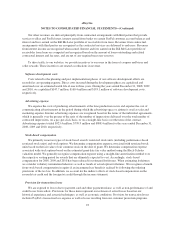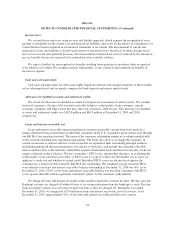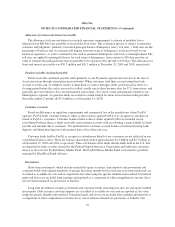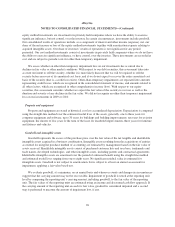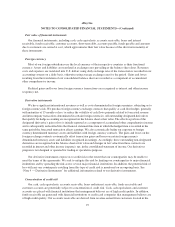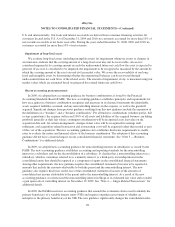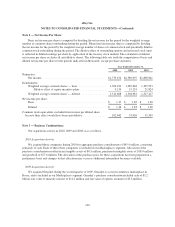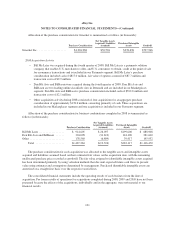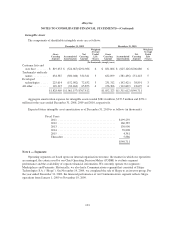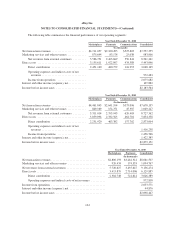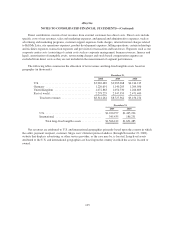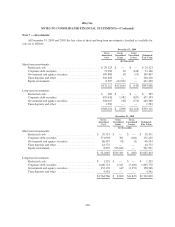eBay 2010 Annual Report Download - page 101
Download and view the complete annual report
Please find page 101 of the 2010 eBay annual report below. You can navigate through the pages in the report by either clicking on the pages listed below, or by using the keyword search tool below to find specific information within the annual report.eBay Inc.
NOTES TO CONSOLIDATED FINANCIAL STATEMENTS—(Continued)
equity method investments are investments in privately held companies where we have the ability to exercise
significant influence, but not control, over the investee. In certain circumstances, investments include goodwill.
Our consolidated results of operations include, as a component of interest and other income (expense), net, our
share of the net income or loss of the equity method investments together with amortization expense relating to
acquired intangible assets. Our share of investees’ results of operations is not significant for any period
presented. Our cost method investments consist of investments in privately held companies where we do not have
the ability to exercise significant influence, or have control, over the investee. These investments are recorded at
cost and are subject to periodic tests for other-than-temporary impairment.
We assess whether an other-than-temporary impairment loss on our investments has occurred due to
declines in fair value or other market conditions. With respect to our debt securities, this assessment takes into
account our intent to sell the security, whether it is more likely than not that we will be required to sell the
security before recovery of its amortized cost basis, and if we do not expect to recover the entire amortized cost
basis of the security (that is, a credit loss exists). Other-than-temporary impairments are separated into amounts
representing credit losses, which are recognized in the consolidated statement of income, and amounts related to
all other factors, which are recognized in other comprehensive income (loss). With respect to our equity
securities, this assessment considers whether we expect the fair value of the security to recover as well as the
duration and severity of any declines in the fair value. We did not recognize an other-than-temporary impairment
loss on our investments in 2009 or 2010.
Property and equipment
Property and equipment are stated at historical cost less accumulated depreciation. Depreciation is computed
using the straight-line method over the estimated useful lives of the assets, generally, one to three years for
computer equipment and software, up to 30 years for buildings and building improvements, ten years for aviation
equipment, the shorter of five years or the term of the lease for leasehold improvements, three years for furniture
and fixtures and vehicles.
Goodwill and intangible assets
Goodwill represents the excess of the purchase price over the fair value of the net tangible and identifiable
intangible assets acquired in a business combination. Intangible assets resulting from the acquisitions of entities
accounted for using the purchase method of accounting are estimated by management based on the fair value of
assets received. Identifiable intangible assets consist of purchased customer lists and user base, trademarks and
trade names, developed technologies, and other intangible assets, including patents and contractual agreements.
Identifiable intangible assets are amortized over the period of estimated benefit using the straight-line method
and estimated useful lives ranging from one to eight years. No significant residual value is estimated for
intangible assets. Goodwill is not subject to amortization, but is subject to at least an annual assessment for
impairment, applying a fair-value based test.
We evaluate goodwill, at a minimum, on an annual basis and whenever events and changes in circumstances
suggest that the carrying amount may not be recoverable. Impairment of goodwill is tested at the reporting unit
level by comparing the reporting unit’s carrying amount, including goodwill, to the fair value of the reporting
unit. The fair values of the reporting units are estimated using an income and discounted cash flow approach. If
the carrying amount of the reporting unit exceeds its fair value, goodwill is considered impaired and a second
step is performed to measure the amount of impairment loss, if any.
96


